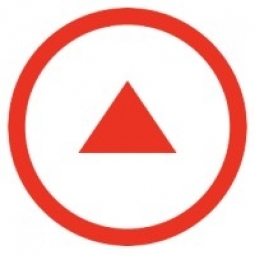公司规模
Large Corporate
地区
- America
国家
- United States
产品
- Fulcrum
技术栈
- Android application
实施规模
- Enterprise-wide Deployment
影响指标
- Productivity Improvements
- Cost Savings
技术
- 平台即服务 (PaaS) - 数据管理平台
适用行业
- 城市与自治市
适用功能
- 设施管理
用例
- 水务管理
- 基础设施检查
服务
- 数据科学服务
关于客户
The City of Wyoming is a community located in the State of Michigan, United States. It has a population of approximately 75,000 residents and is responsible for over 20,000 water service lines. The city is currently undergoing a transition from manual water meter reading to an Advanced Meter Infrastructure (AMI) network. This transition is expected to involve the replacement of about 50% of the city's water meters within the next five years. The city is also required by the state to complete a water distribution system material inventory by January 1, 2025. This inventory must include water service line material information.
挑战
In 2019, the State of Michigan required water providers to complete a water distribution system material inventory. This inventory needed to include water service line material information and be complete by January 1, 2025. For the City of Wyoming, a community of approximately 75,000 residents with over 20,000 water service lines, this information needed to be better organized and aligned. Also in 2019, the City of Wyoming began implementing an Advanced Meter Infrastructure (AMI) network, transitioning away from the manual water meter reading process. Additionally, approximately 50% of the water meters in the city will be replaced within the next 5 years. Staff sought a solution that was able to collect, retain, report and map all of the information needed for the water service line material inventory and AMI endpoint and water meter installations, as well as link between different billing and work order systems.
解决方案
The City of Wyoming chose Fulcrum for its ability to configure the data structure to meet their needs. They were impressed by the GPS functionality, the ability to quickly and easily attach photos, the speed of the system in the field and the reasonable cost of the software. During the trial period, they were able to create a database on their own and found that they could easily change the type and form of data that they were gathering as they discovered a need. The Fulcrum team was able to assist in identifying hurdles in the initial import of data. They then developed a database of more than 22,000 records from their billing system with one record per billed account and attached repeatable records with service lines, meters and AMI endpoints. Field deployment was simple and easy to manage. The Android application was downloaded by field staff and little training was necessary as the system is fairly self-explanatory with data field descriptions and prompts.
运营影响

Case Study missing?
Start adding your own!
Register with your work email and create a new case study profile for your business.
相关案例.

Case Study
Turning A Stadium Into A Smart Building
Honeywell created what it called the “intelligent system” for the National Stadium in Beijing, China, turning the venue for the opening and closing events at the 2008 Summer Olympics into a “smart building.” Designed by highly controversial artist Ai Weiwei, the “Bird’s Nest” remains one of the most impressive feats of stadium architecture in the world. The 250,000 square meter structure housed more than 100,000 athletes and spectators at a time. To accommodate such capacity, China turned to Honeywell’s EBI Integrated Building Management System to create an integrated “intelligent system” for improved building security, safety and energy efficiency.
.png)
Case Study
Smart Street Light Network (Copenhagen)
Key stakeholders are taking a comprehensive approach to rethinking smart city innovation. City leaders have collaborated through partnerships involving government, research institutions and solution providers. The Copenhagen Solutions Lab is one of the leading organizations at the forefront of this movement. By bringing together manufacturers with municipal buyers, the Copenhagen Solutions Lab has catalyzed the development and deployment of next-generation smart city innovations. Copenhagen is leveraging this unique approach to accelerate the implementation of smart city solutions. One of the primary focus areas is LED street lighting.

Case Study
Buoy Status Monitoring with LoRa
The Netherlands are well-known for their inland waterways, canals, sluices and of course port activities. The Dutch Ministry of Infrastructure indicates that there are thousands of buoys and fixed items in and near water environments that would profit from IoT monitoring. One of the problems with buoys for example, is that they get hit by ships and the anchor cable breaks. Without connectivity, it takes quite some time to find out that something has happened with that buoy. Not to mention the costs of renting a boat to go to the buoy to fix it. Another important issue, is that there is no real-time monitoring of the buoys at this moment. Only by physically visiting the object on the water, one gains insight in its status.

Case Study
China Mobile Smart Parking
Smart Parking, powered by NB-IoT technology, is making it easier for drivers to find free parking spots. Cities can better manage their parking assets and maximize the revenue available to them as a result. Drivers searching for parking create congestion and pollution by circling and hunting for available parking. Smart Parking services are able to significantly ease these problems by guiding a driver directly to a parking space.

Case Study
Barcelona Case Study
Barcelona’s heavy traffic and its associated high levels of pollution were the primary factors that motivated some companies and universities to work on strategies for improving traffic in the city centre. Bitcarrier is one of the technologies involved in the In4Mo Project, whose main objective is to develop the applications that form the core of smart mobility, one of the fundamental pillars of the smart city concept.




